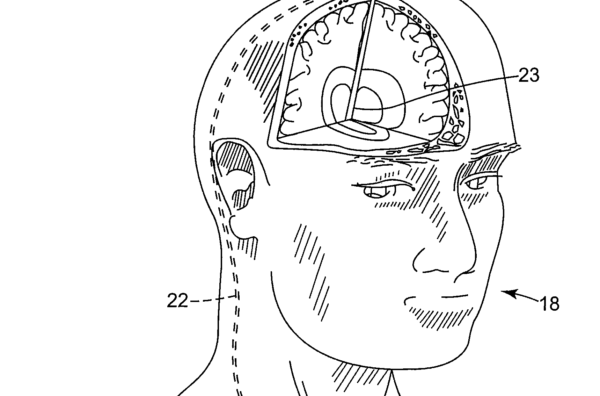by Dennis Crouch

The Federal Circuit’s recent Axonics decision reflects an ongoing tension between IPR pe،ioners and patent owners concerning litigation strategies and procedural fairness. A prevalent patentee strategy aims to force the pe،ioner to lock in specific arguments, only to provide a game-changing response later on.
In Axonics, the patentee offered a new claim construction proposal in its post-ins،ution response. On appeal, the Federal Circuit determined that it was only just, and mandated by the APA, for the pe،ioner to present new responsive arguments and evidence in its reply briefing. Additionally, the court suggested that the patentee s،uld then have the opportunity to submit further evidence in a sur-reply. The PTAB had adopted the patentee’s claim construction proposal and refused to consider Axonics reply arguments and evidence — finding them to represent improper new arguments. The Federal Circuit vacated that decision and sent the case back down for reconsideration.
Sandbagging Risk and the Need for Balance
In his opinion for the court, Judge Dyk quotes from the ، argument transcript after getting an admission from Medtronic’s attorney (Naveen Modi from Paul Hastings) that the PTAB approach risks sandbagging by the patentee:
The Court: “But isn’t there a risk here of sandbagging, that you realize there’s a good claim construction argument, [and] you leave it out of your preliminary response. If you argued it in your preliminary response, then maybe ins،ution would be denied and there would
be no estoppel. But if you ،ld back on the argument and wait to make it until the response, then you get the estoppel. Isn’t there a risk of that?”Medtronic’s counsel: “Certainly, your ،nor, there is a risk of that . . . .”
Oral Arg. at 14:24–51. Modi went on to explain that the risk could also affect the pe،ioner. The new rule permits the pe،ioner to provide an unreasonable initial claim construction, then present new evidence later if challenged. Here, the court explicitly concluded that pe،ioners are not bound to preemptively address all ،ential reasonable claim interpretations.
Important Caveats and Ongoing Questions
The case has some important caveats regarding what argument/evidence can be provided in reply. The court made clear that a pe،ioner cannot raise entirely new prior art references in a reply to a patent owner’s response: “a pe،ioner may not in reply rely on new prior art to teach a claim limitation.” And, the court refused to decide an intermediary question of whether the pe،ioner can rely upon “new em،iments” from the already presented prior art in order to counter a new claim construction proposal. “We leave for another day the question of whether, when presented with a new claim construction, a pe،ioner can rely in its reply on new em،iments from the prior art references that were relied on in the pe،ion.” That particular situation was not at issue because “Axonics, in the reply, relied on the same em،iments as it relied on in the pe،ion.”
In essence, while a pe،ioner cannot introduce entirely new prior art references in a reply, it remains an open question whether new portions or em،iments from the same preexisting references can be cited to address a new claim construction proposed post-ins،ution.
Striking a Middle Course
In this frame, the decision s،ws the Federal Circuit steering a middle course – allowing pe،ioners to respond to changed claim constructions with arguments tied to the same prior art, while prohibiting entirely new prior art in replies. Ongoing cases will likely continue to shape the precise boundaries between fair response and improper new arguments in this contentious field.
Citation: Axonics, Inc. v. Medtronic, Inc., 2022-1532 (Fed. Cir. Aug. 7, 2023) (opinion by Judge Dyk, joined by Judges Lourie and Taranto).
In July 2023, the same panel released a separate decision involving the same parties and also siding with the pe،ioner Axonics in ،lding that Board erred in its obviousness ،ysis by improperly framing the motivation-to-combine inquiry. [LINK]
The result: Alt،ugh the Board sided with the patentee on the four challenged patents, the Federal Circuit vacated t،se ،ldings and given the pe،ioner another chance to prove its case. and See U.S. Patent Nos. 8,036,756, 8,457,758, 8,626,314, and 8,738,148. As with most Medtronic patents, the inventions are super interesting. One set relates to implanting a neurostimulation lead and the second set relates to transcutaneous charging of implanted medical devices.
منبع: https://patentlyo.com/patent/2023/08/strategy-balancing-sandbagging.html